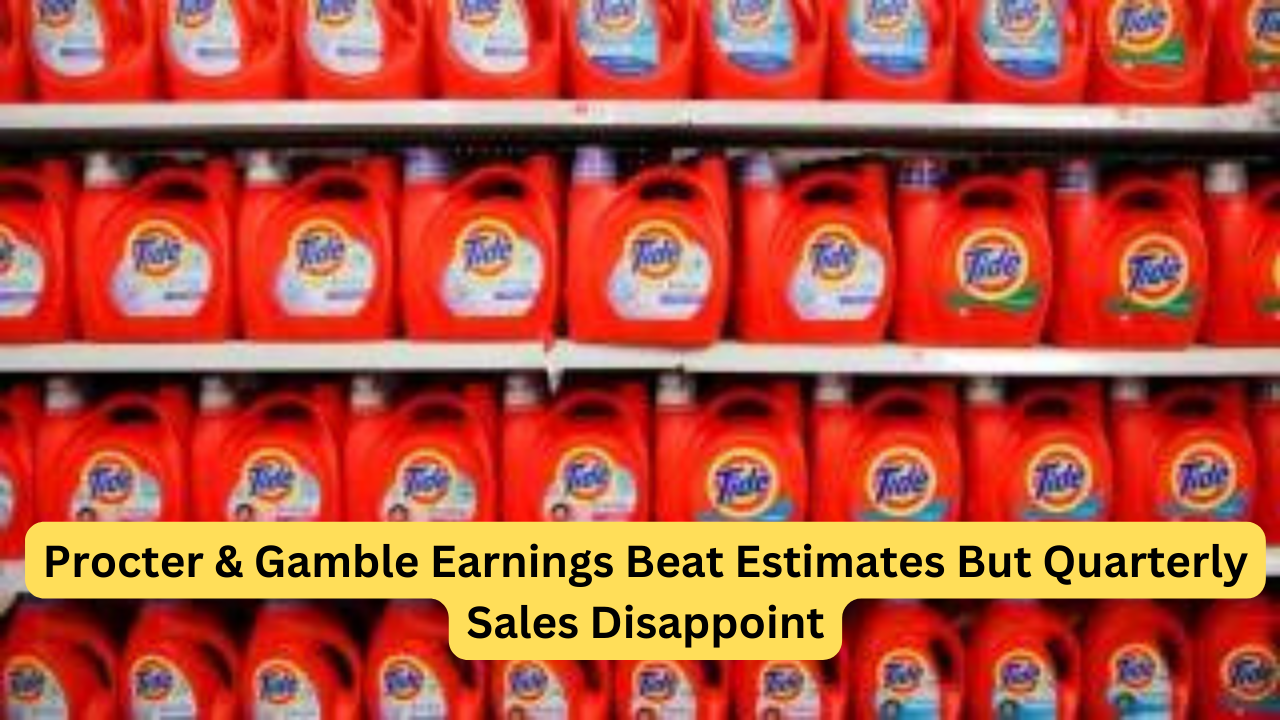Procter and Gamble Earnings Beat Estimates But Quarterly Sales Disappoint

Procter and Gamble (P&G), a giant in the consumer goods sector, recently announced its quarterly earnings, which exceeded analysts’ expectations. However, the company faced a disappointment in its quarterly sales figures. This mixed result has sparked discussions and speculations about P&G’s future strategies and market performance.
Procter & Gamble’s Volume Increase: A Positive Sign
One of the most noteworthy aspects of Procter and Gamble’s latest financial report is the increase in volume. This marks the first time in over two years that P&G has seen a rise in this metric. Volume is a crucial indicator as it excludes pricing, offering a more accurate reflection of consumer demand.
Over recent years, Procter and Gamble’s strategy focused heavily on price hikes across its diverse product portfolio, including well-known items such as diapers and detergent. These price increases fueled sales growth but resulted in flattened or declining volumes as consumers bought less.
Quarterly Sales Disappoint: Understanding the Factors
Despite the positive news on volume, Procter and Gamble’s quarterly sales did not meet expectations. The company’s shares fell by 4.6% in premarket trading following the announcement. Various factors contributed to this outcome, and understanding these can provide deeper insights into P&G’s performance and future direction.
Impact of Price Hikes on Sales
Procter and Gamble’s consistent price increases played a significant role in boosting sales over the years. However, this approach also had its downsides. As prices rose, many consumers cut back on their purchases, affecting overall sales volume. The recent volume increase suggests a shift in consumer behavior or P&G’s pricing strategy, but the lag in sales figures indicates that higher prices still pose a challenge.
Market Conditions and Consumer Behavior
The current economic landscape and shifts in consumer behavior also impacted Procter and Gamble’s sales. Inflation, changing consumer preferences, and increased competition in the consumer goods sector have all contributed to the sales shortfall. Consumers are more price-sensitive and often look for alternatives, which can affect a company’s sales performance.
P&G’s Strategic Response: What’s Next?
Procter and Gamble’s leadership is likely to reassess and adapt its strategies in response to these mixed results. The company’s focus will likely be on balancing pricing with consumer demand to maintain growth and market share.
Adapting Pricing Strategies
Given the impact of price hikes on sales volume, Procter and Gamble might consider revisiting its pricing strategies. The goal would be to find a balance that maintains profitability while encouraging consumer purchases. Competitive pricing could help regain and retain customers who might have been deterred by previous price increases.
Product Innovation and Expansion
Innovation remains a key driver for Procter and Gamble. By continually improving and expanding its product lines, P&G can attract new customers and retain existing ones. Focusing on sustainable and innovative products can also align with changing consumer preferences, potentially boosting sales.
Strengthening Market Presence
Expanding market presence through strategic acquisitions, partnerships, and marketing initiatives can help Procter and Gamble enhance its competitive edge. Strengthening its presence in emerging markets and leveraging digital platforms for better customer engagement are potential strategies to drive growth.
Investor Reactions and Market Impact
The mixed quarterly results had an immediate impact on Procter and Gamble’s stock price, with a notable drop in premarket trading. Investor reactions highlight the market’s sensitivity to both positive and negative aspects of financial reports.
Long-Term Investor Confidence
Despite the short-term drop in stock price, long-term investors might still have confidence in Procter and Gamble’s ability to navigate challenges and deliver sustained growth. The increase in volume is a positive indicator, suggesting potential for future sales recovery and market stability.
Analyst Perspectives
Financial analysts provide varied perspectives on Procter and Gamble’s performance and future prospects. Some emphasize the importance of the volume increase as a sign of recovering demand, while others caution about the ongoing challenges posed by high prices and market competition.
Conclusion: Procter and Gamble’s Path Forward
Procter and Gamble’s latest earnings report presents a mixed picture, with earnings surpassing estimates but sales falling short. The increase in volume after more than two years is a promising sign, indicating potential for demand recovery. However, the impact of price hikes on sales and the challenging market conditions require strategic adjustments.
Procter and Gamble’s focus on adapting pricing strategies, driving product innovation, and strengthening market presence will be crucial in navigating these challenges. The company’s ability to balance profitability with consumer demand will determine its future success and market performance.




